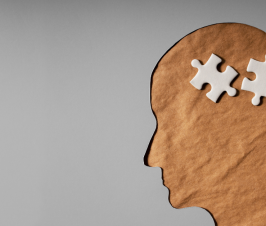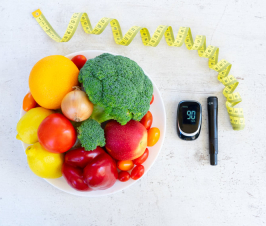Dr. Sarah Cimperman, ND
@DrCimperman
Detox products and protocols are becoming increasingly popular, from raw food and vegan diets to footbaths and body wraps. These things may be good for us (or not) and they may reduce our exposure to toxins, but they don’t detoxify our bodies. A basic understanding of what detox is and what it isn’t makes shams easy to spot.
Environmental Toxins
Toxins are chemicals in the environment that are harmful to our health. Most of the time, we can’t see or smell or taste them, but toxins are very real and we’re exposed to them every day through air, water, food, and furnishings. Our bodies have a hard time excreting these unnatural substances, so they’re stored instead, tucked away inside fat cells where they can’t do as much damage as they could circulating throughout the bloodstream.
Studies show that the amount of toxins in our tissues depends not on how much body fat we have but on how old we are.1 Toxins begin to build up inside our bodies before we’re even born and research studies show that already at birth, babies’ bodies contain mercury, multiple pesticides, more than a dozen different flame retardants, and air pollutants from fossil fuels, plastic production, and coal-fired power plants. The Environmental Working Group, in partnership with laboratories around the world, found 232 different chemicals in the cord blood of newborn infants and 493 different chemicals in people of all ages.2 Toxins permeate our environment and they permeate our bodies.
Detox Facts
Detoxification is the removal of toxins, and it’s something we do naturally. In fact, you’re doing it right now. Every single second, our cells are generating energy and generating waste products as a normal part of metabolism, and every single second our bodies are working to eliminate the waste products. The same mechanisms that help our bodies excrete natural waste products also help us excrete unnatural ones like chemicals from the environment.
Detoxification involves several hormones, enzymes, and organs, including the liver, kidneys, gastrointestinal tract, skin, lungs, adipose tissue, and lymphatic system. Most environmental toxins are fat-soluble, so they accumulate inside fat cells. When levels of blood sugar and insulin are low, adipose cells release fatty acids into the bloodstream to be used for energy, and fat-soluble toxins are released at the same time. They circulate through the bloodstream until they get to the liver, where chemical reactions transform them into water-soluble compounds that are more easily eliminated. These chemical reactions are dependent on cofactors like vitamins, minerals, antioxidants, and amino acids (which come from protein). After they leave the liver, water-soluble compounds are excreted through the lungs, skin, kidneys, and intestines.
To truly detox, we must minimize the toxins we take in from the environment while we maximize the toxins we remove from our bodies. Diet, supplements, and lifestyle all play a part. A detox diet, composed of three satisfying meals each day and a 12-hour overnight fast, emphasizes green vegetables, healthy fat, and sufficient protein while eliminating sweets, starches, and processed foods. As a result, low levels of blood sugar and insulin prompt the body to burn fat for energy and mobilize stored toxins. Supplements provide the nutrients and cofactors required for chemical reactions in the liver. Regular exercise, stress management, and good sleep all help keep insulin levels low, which also prompts fat burning and toxin mobilization. Additionally, exercise increases the circulation of blood and lymphatic fluid throughout the body, increasing the removal of waste products from tissues, and along with sauna therapy, exercise helps eliminate toxins through sweat.
Detox Fiction
Detoxification can only happen when blood sugar and insulin levels are low but many popular “detox” protocols ignore this important fact. It’s not uncommon for foods, drinks, and supplements designed specifically for detox to raise blood sugar and/or insulin levels. Examples include juice, whole grains, starchy fruits and vegetables, protein bars, and processed products containing natural and artificial sweeteners. Because consuming these foods can raise blood sugar and insulin levels, they can cause toxins to be stored rather than released. That’s the opposite of detoxification.
Other popular methods of detox include calorie restriction and fasting. Both will lower blood sugar and insulin levels for sure, but without adequate protein and the necessary nutrients to drive chemical reactions in the liver, detoxification mechanisms will be compromised and toxins that have been released from fat cells can build up to harmful levels in the body. There are indications for medical fasting and calorie restriction, but detox isn’t one of them. Unsupervised fasting can be dangerous, so never attempt this on your own. If you’re interested in calorie restriction or fasting, find a physician or facility specializing in these practices.
Precautions
Most people benefit from detoxification, but it’s not right for everyone. Pregnant and breastfeeding women should not undergo detox because environmental toxins can be transferred to fetuses through the maternal blood supply and to babies through breast milk. (However, detox is an especially good idea for women before they conceive.) Others who should not undergo detox include individuals with constipation (less than one bowel movement per day), kidney disease, liver disease, cardiac arrhythmia, unexplained abdominal pain, or acute inflammation of any part of the gastrointestinal tract, and anyone who has had recent surgery or chemotherapy treatments.
If you have serious health problems or take prescription medications, you should talk to your doctor before you detox. Increasing liver function can alter the metabolism of certain drugs, so your doctor may need to adjust your dosage. If you haven’t been exercising, talk to your doctor about goals and guidelines before you start, then work with a personal trainer to establish a routine designed to help you meet them.
 Sarah Cimperman, ND is the author of the new book, The Prediabetes Detox: A Whole-Body Program to Balance Your Blood Sugar, Increase Energy, and Reduce Sugar Cravings. She graduated from NCNM in 2002 and has a private practice in New York City. Her expertise has been featured on Fox News and Huffington Post and in Natural Health magazine, Whole Living magazine, and the Well Being Journal, among other publications. Dr. Cimperman also writes two blogs, A Different Kind Of Doctor and The Naturopathic Gourmet.
Sarah Cimperman, ND is the author of the new book, The Prediabetes Detox: A Whole-Body Program to Balance Your Blood Sugar, Increase Energy, and Reduce Sugar Cravings. She graduated from NCNM in 2002 and has a private practice in New York City. Her expertise has been featured on Fox News and Huffington Post and in Natural Health magazine, Whole Living magazine, and the Well Being Journal, among other publications. Dr. Cimperman also writes two blogs, A Different Kind Of Doctor and The Naturopathic Gourmet.
References
- Hue O, Marcotte J, Berrigan F, Simoneau M, Doré J, Marceau PP, Marceau S, Tremblay A, Teasdale N. Plasma Concentration of Organochlorine Compounds Is Associated with Age and Not Obesity. Chemosphere. 2007;67(7):1463–67.
- Environmental Working Group. Pollution in Minority Newborns: BPA and Other Cord Blood Pollutants. EWG website http://www.ewg.org/research/minority-cord-blood-report/bpa-and-other-cord-blood-pollutants. Accessed January 13 2015.

















